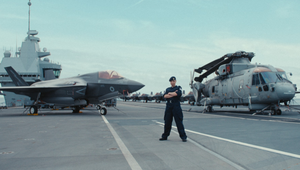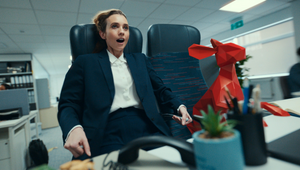
Colour Grading in Full CG Projects: Why Is it Necessary?

In October last year, the massively multiplayer online role-playing game developed by Amazon Games Orange County, ‘New World’ saw a major paid expansion, where gamers relished new weapons and explored transformed lands. Dubbed ‘Rise of the Angry Earth’, the new expansion allows players to discover Aeternum’s next chapter through an entirely new story, new progressions which increase the character’s level to 65 and Gear Score to 700, new gear parity (finding and equipping Artefacts), new creatures and much more.
One look at the Angry Earth is enough to provoke awe, with its attention to detail and beautiful graphics which appeal to gamers and non-gamers alike. Although a purely CG project (which many times don’t require a grade from a colourist), the team behind the game approached Alex Gregory, colourist at No.8, who was asked to jump on board this project. So what really are the benefits of having a colourist join a team on a project like this?
“There’s no question that CG artists are more than capable of colouring their own images, but the collaboration with a colourist can still be incredibly valuable. A colourist will not only bring a fresh pair of eyes to a project, but will have an entire toolset dedicated to finessing the minutiae and bringing shape and texture to the world that the CG team have created,” explains Alex.
Not only this, but a colourist can also act as a unifying force - making sure the tone and feel of the film are consistent, and different scenes match and flow seamlessly.
“A specific brief for this project was to soften the ‘digital edge’ off the images, and help them sit in more of an organic, photographic world,” says Alex. So, a variety of techniques were employed - manipulating contrast and density of colours, as well as shaping the images and adding grain and halation - all aiming to mimic the feeling and visual tropes that we associate more traditionally with film.
For Angry Earth, Alex worked closely with the team at Axis from early on in the process, discussing workflow and who would handle specific tasks from the get-go. He explains: “The film is essentially divided into five separate lighting environments, and we did an initial grade session where I created a basic look for each, working with the director and the rest of the team to find looks that convey the mood and tone they were after.”
Alex then created LUTs from these looks, which the team used to work through from that point forward, to achieve a balanced and consistent base from which to finesse their lighting and compositing.
In additional sessions, later in the process, Alex explored developing the looks further, with the intention to help the team with their workflow. In these sessions, we were able to play with what was possible to achieve in grade in terms of finesse and what would require additional work in CG.
Speaking of the brief on the project and the benefits of working with Alex, Abed Abonamous, director at Axis Studios said, “As the main protagonist, the Wolf character is our guide as he journeys through an increasingly alien landscape. It's present in virtually every shot, from every angle, so it needs to be realistic but at the same time his thoughts, feelings and reactions need to be clear.
“There are so many small subtle movements that bring a character to life, all the various physicalities and ways of expressing feelings that show personality. That was important in expressing the Wolf being taken over by the events around him and his eventual fraternity with the human.”
Achieving Abed’s creative vision for the Wolf character and also making it work technically, to make it believable, required close collaboration between Axis’ teams. Character development began with concept art and over the course of production, it required consonant dialogue between multiple teams. All technical aspects had artistic input and vice versa, all in service of creating truly wild believable creatures in pixel-perfect detail.
Evidently, a full CG production consists of many different elements that come together in the composition stage. It is in this stage that things become quite unwieldy and the main challenge, as Abed puts it, is to “make each shot and the project look cohesive”. Here is where colour grading proves crucial.
“Grading looks at the full sequence and can create a look and feel in a real-time collaborative context. This allows for more experimentation and finessing, as turnaround times are massively cut down. The process is more clearly split into creating functional shots and then injecting them with a style, removing the burden of the latter from the complex lighting and compositing pipeline,” explains Abed.
And more specifically, the ORB grade helped Abed and the teams balance naturalism with hyperrealism, while constantly increasing the ambience of the atmosphere throughout the forest environment in the game. “Through grading the forest now looks equal parts natural and magical, and we placed a strong focus on vibrant time of day palettes. Finally, grading helped achieve smoother transitions between the various sequences of our piece.”
We see how Angry Earth is an excellent example of how - if the balance is struck correctly - the collaboration between a CG team and a colourist is not about “simple adjustments to the final picture, or just replacing one another’s skills”, but more so about complementing and amplifying each other’s strengths. The end result is a testament to that.
Abed leaves us with this: “I had a great time working with Alex. We went through the rough cut and he immediately grasped the intent, going into the session with strong suggestions of his own. In addition to working his magic, he was also always open to left-field suggestions. The vibe was one of finding the perfect image together and he’d handle all the technical aspects pretty much invisibly.”















